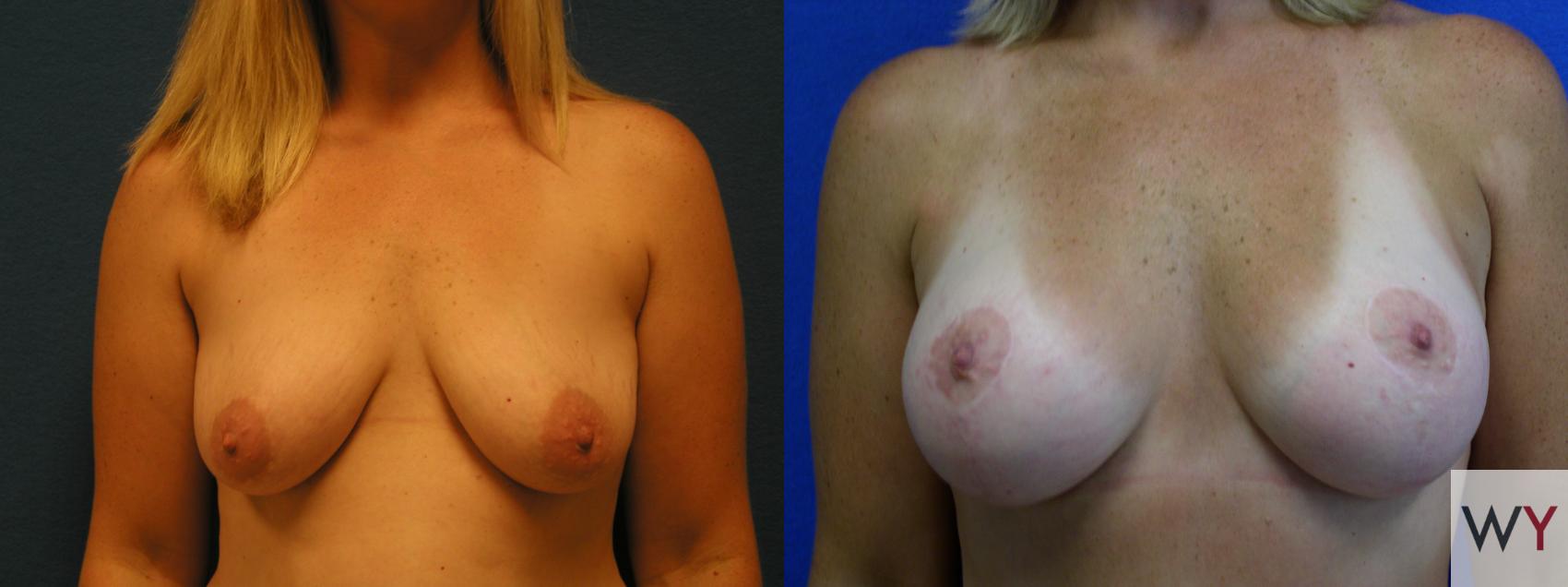To counteract a sagging bust, you may be considering a mastopexy or breast lift. While it is an excellent way to get firm-looking, perky breasts, you may be understandably concerned about the potential for postoperative scarring. You may even be wondering whether “no scar breast lifts” really work.
In this post, I will cover what a breast lift can do, where incisions are made, and whether “no scar breast lifts” are possible. I’ll also offer tips for setting yourself up for success post-surgery so that you can enjoy your new figure with minimal scarring.
The reality is this: Scars after plastic surgery are inevitable, but they don’t need to be unsightly.
What Breast Lifts Can (and Can’t) Do
A breast lift can be an ideal solution if you’re dissatisfied with your breasts’ shape, symmetry, and positioning. Conical, wide-set breasts with downturned nipples can be uplifted with a rounder and more compact profile, while saggy, loose skin can be excised for a smoother appearance.
Breast lifts, however, cannot restore lost volume or increase your bust size as a breast augmentation can. A breast lift may even reduce breast size once redundant fat and skin have been removed. The outcome, of course, depends on the extent of the surgery.
Understanding Incision Types
Breast lift incisions build on each other as the procedure scales in complexity.
Crescent & Doughnut Incisions
The first ‘building block’ is called a crescent incision. This short, discreet cut along the top of each areola is typically employed when combining a breast lift with augmentation. A crescent incision, along with its evolution, the doughnut (which encircles the areola), is often the closest that patients can get to a breast lift without scars, as the incisions normally disappear amid the areola’s natural coloration.
Lollipop & Anchor Incisions
Women desiring greater lifting and reshaping may receive a lollipop incision, which adds a vertical line to the doughnut incision, extending from the bottom of the areola to the base of the breast. Add horizontal extensions along this crease line, and you’ll get the anchor, the most extensive type of incision. ‘
Your plastic surgeon will go over your options during your consultation and make recommendations based on your unique anatomy and desired outcomes. I take as much time as needed to fully discuss and understand your goals for breast lift surgery and will work with you to customize a treatment plan that is best for your body—which may include additional surgical interventions.
As long as you work closely with your board-certified plastic surgeon at every stage of the process, there is very little cause for concern about “boob lift” scars.
Breast Lift Before and After
The pictures below show some of Dr. Yamahata’s breast lift and breast lift with implant patients before and after their surgeries. As you can see, mastopexy scars fade and flatten nicely.
Are No Scar Breast Lifts Effective?
While ultrasound treatments may promise a “no scar breast lift” due to the lack of an incision, these only temporarily tighten the skin and are intended to treat minimal sagging. A more permanent, comprehensive solution requires surgical intervention.
Some surgeons may also call a breast lift using a doughnut incision a “scarless breast lift” or “no scar breast lift.” They assert that the scar is concealed within the areola, so it is not very visible. These breast lifts are effective for mild to moderate breast sagging but aren’t entirely scarless.
Tips for Reducing Mastopexy Scars
While your plastic surgeon will carefully suture your incisions and strive to be as unobtrusive as possible, the postoperative stage will greatly affect your rate and quality of healing. I personally check in on my patients and advise them on ways to minimize mastopexy scars. Here are a few tips for you:
- Use topical ointments and silicone gels to keep scars moisturized.
- Wear your surgical support bra.
- Sleep on your back to avoid putting pressure on your breasts.
- Avoid running, jumping, or other repetitive activities that could aggravate the surgical site.
- Massage the scars (once incisions are healed) to decrease inflammation and prevent the buildup of collagen fibers and adhesions.
- Stop smoking. Smoking restricts blood flow to the incision, impeding healing.
If your scars still bother you after a suitable recovery period, talk to your plastic surgeon about treatment options like laser scar removal procedures.
How Do Breast Lift Scars Heal?
The scars will generally be at their most pronounced and pigmented in the days following surgery. As the months pass, the raised lines will flatten, and the color should fade significantly. Of course, there are some exceptions, but for most patients, breast lift scarring will become largely unnoticeable within a year and be far outweighed by the beauty of their results.
Combining Breast Procedures
Women who want to enhance their breasts’ size and positioning may wish to add implants to their lifts. Just as augmentation alone will not create perkier breasts (in fact, the added weight may exacerbate sagging), a breast lift cannot restore fullness. Together, these procedures can yield the most comprehensive results while requiring only a single surgery. I discuss combining a breast lift with augmentation further in this related blog post.
Similarly, women may opt for a combined breast lift and reduction to alleviate back pain and create a lighter, more proportionate bust. I recommend studying the before and after photos of different breast procedures to see what results can be achieved and whether a combination approach best suits your needs.
To discuss how our office can best help you achieve your cosmetic goals, please use our online form to request a consultation or call us at (916) 929-1833.
Originally published May 2023; Updated August 2024







Leave a Reply